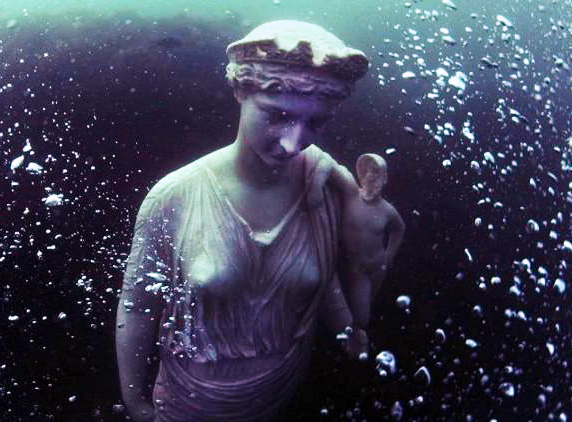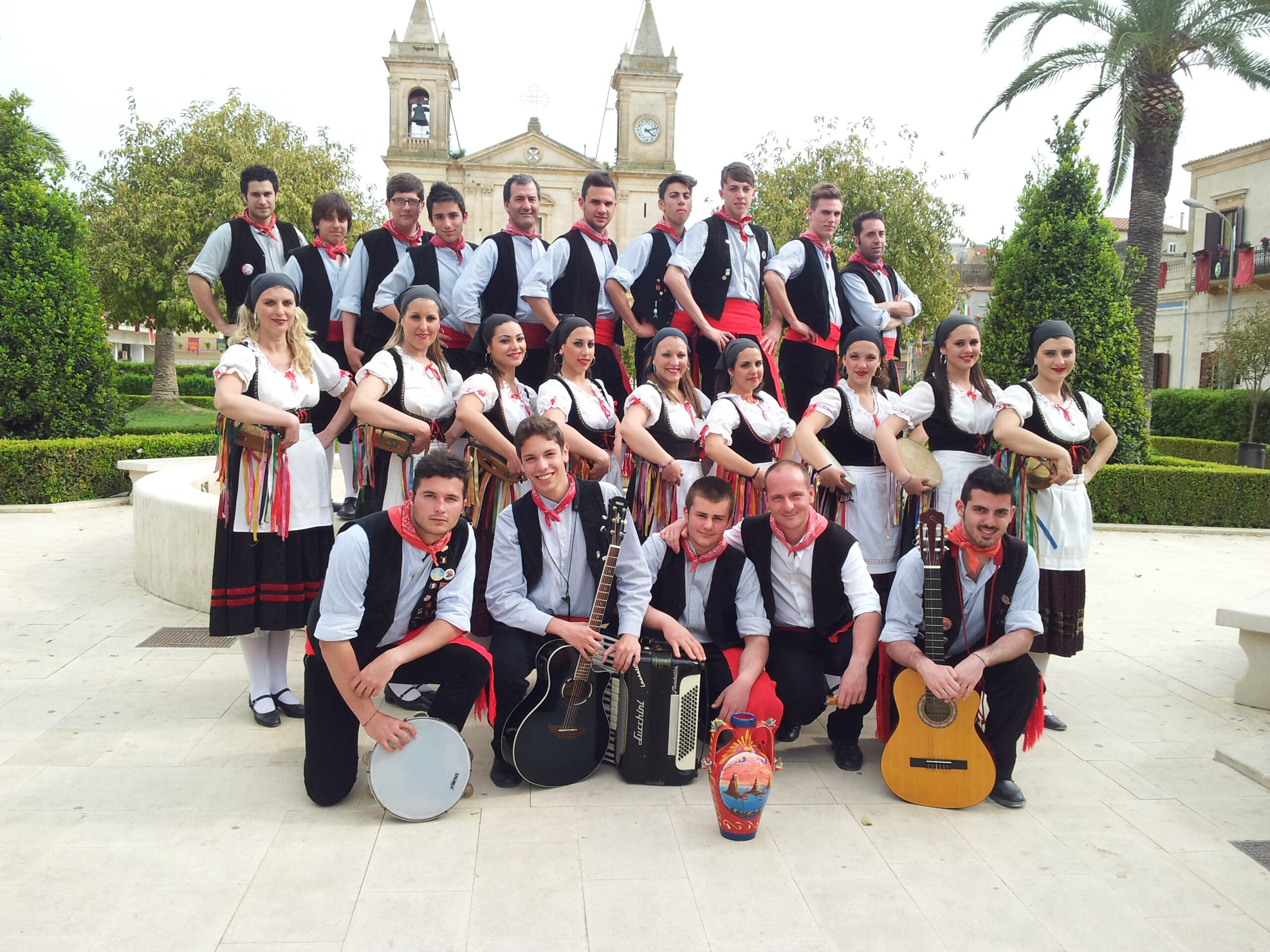It seems as though the wonders of Italy never cease, even when the sea has swallowed some of its sites. Such is the case of the ancient Roman resort of Baiae, situated off the northwest shore of the Gulf of Naples. For centuries, Baiae was a prominent resort that catered to the recreational whims of the rich and powerful of the Roman elite. The city, which was located over natural volcanic vents, was famous for its healing medicinal hot springs which occurred all around the city and were the sites of numerous spas.
Baiae, also known as Baia, was built on the Cumaean Peninsula in the Phlegraean Fields, an active volcanic area. It was likely originally developed as the port for Cumae. It was frequented by such illustrious figures as Marius, Lucullus and Pompey. Julius Caesar had a villa there, as did Augustus. The infamous Emperor Nero had a villa constructed in the middle of the 1st century and Hadrian died at his villa in the resort town in 138 AD. It was also a favorite spot of the Emperor Septimius Severus.
In 39 AD, Baiae was the location of a stunt by the eccentric Emperor Caligula. The astrologer Thrasyllus predicted that Caligula had “no more chance of becoming emperor than of riding a horse across the Gulf of Baiae.” In response, Caligula ordered a three-mile-long pontoon bridge to be built from impounded ships of the area, fastened together and weighted with sand. These ships stretched from Baiae to the neighboring port of Puteoli. Clad in a gold cloak, Caligula then crossed it on a horse. As late as the 18th century, scattered fragments were still being shown to tourists as the “Bridge of Caligula.”
Baiae was notorious for the hedonistic lifestyle of its residents and guests. Known for its extravagant parties in villas, as well as on its beaches, it was described by Seneca the Younger as a “vortex of luxury” and a “harbor of vice.”
Unfortunately, the good times were not to last. The ground began to sink into the sea as early as the third century and continued for another 300 years, until, by the eighth century, the lower part of Baiae was largely submerged. The town was sacked during the barbarian invasions and by raiders in the centuries following the Fall of the Empire. By 1500, it was completely deserted, due to recurrent malaria. In the centuries that followed, antiquities were recovered from the site. The Aphrodite of Baiae, a variant of the Venus de Medici, was excavated there sometime in the early 19th century.
Many impressive buildings from the upper town can be seen in the Parco Archeologico delle Terme di Baia. The important archaeological remains were intensively excavated beginning in 1941, revealing layers of buildings, villas and thermal complexes belonging to periods from the late Republican Age all the way up through the late Empire. Recent underwater archaeology has revealed many of the fine buildings, now protected in the submerged archaeological park.
Among the most significant and remarkable remains are several dome-like structures such as the Temple of Mercury, the Temple of Venus and the Temple of Diana. These structures were not actually temples, but were part of thermal baths.
In the Temple of Diana, its colossal dome is half collapsed and was decorated with marble friezes depicting hunting scenes. The Temple of Mercury consists of an enormous dome over 70 feet in diameter. It was the largest in the world prior to the construction of Rome’s Pantheon in 128 AD. It was used to enclose the frigidarium, or cold pool of the public baths. The Temple of Venus is octagonal in shape and is sunk ten feet into the ground. It had eight large arched windows and a balcony inside overlooking the pool.
Overlooking the sea is the Villa of the Ambulatio, with a series of six terraces connected to each other by a complex of staircases. It is named after the ‘ambulatio,’ the long covered walkway on the second terrace that provided a magnificent panoramic view of the gulf below. On the highest terrace are service and small bathing areas, with rich stucco decorations on the ceiling. The villa was likely a spa for the wealthy visitors to the town, rather than a private estate.
The public and private baths of Baiae were filled with warm mineral waters directed to their pools from underground hot springs. Roman engineers were also able to construct a complex system of chambers that channeled underground heat into facilities that acted as saunas. In addition to their recreational function, the baths were used in Roman medicine to treat various illnesses and physicians would attend their patients at the springs.
Today, the ancient remains of Baiae can be visited in one of the world’s few underwater archeological parks. Visitors can view the crumbled structures and amazingly preserved statuary of the city through glass-bottomed boats, snorkeling or even scuba dives which allow people to actually swim among the impressive ruins. While the city is no longer a resort, its waters still hold wonders.





